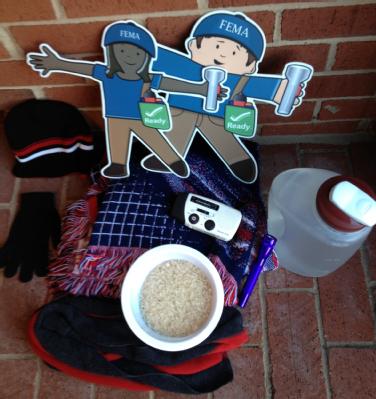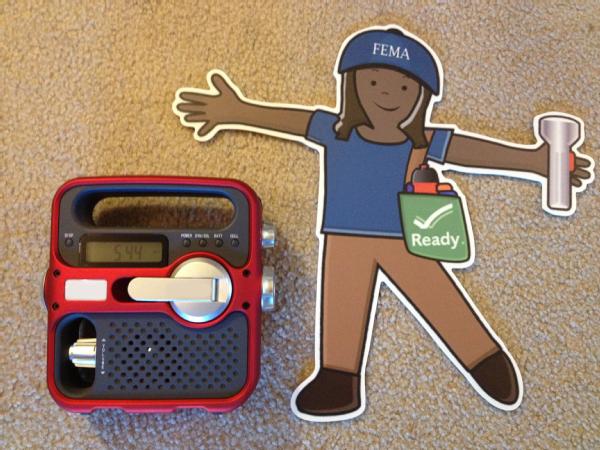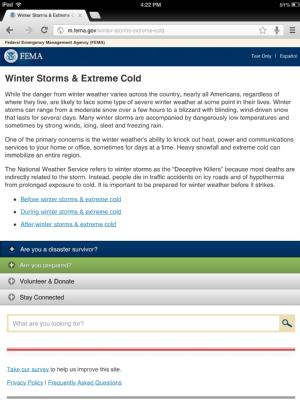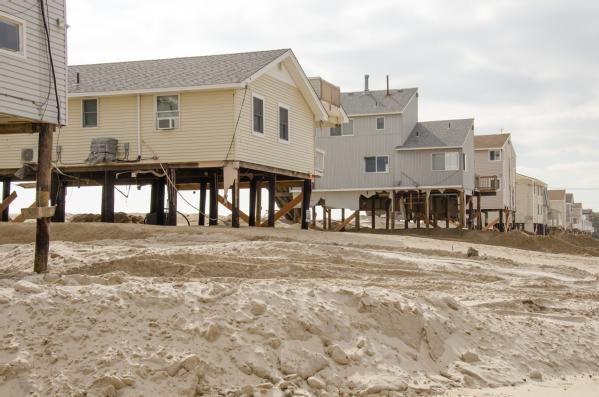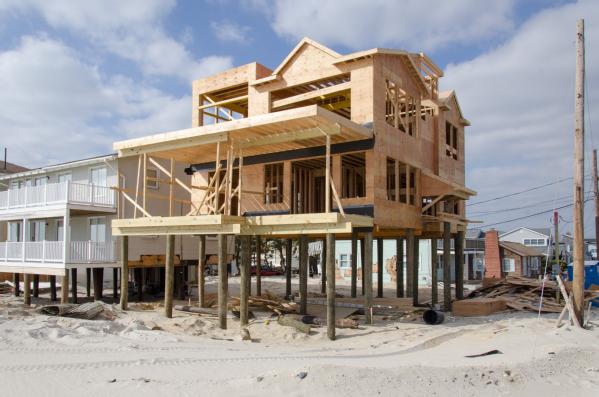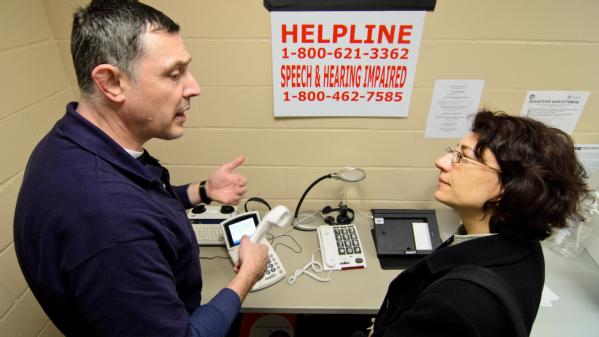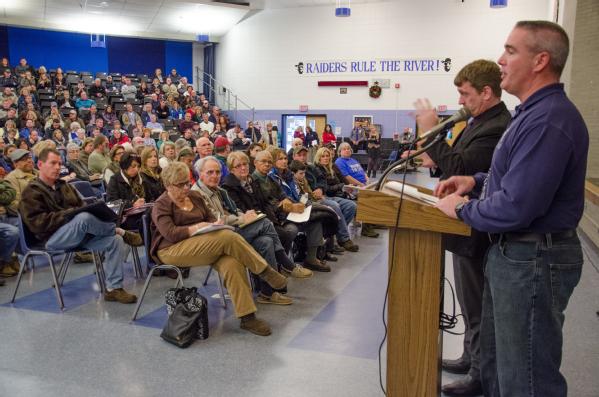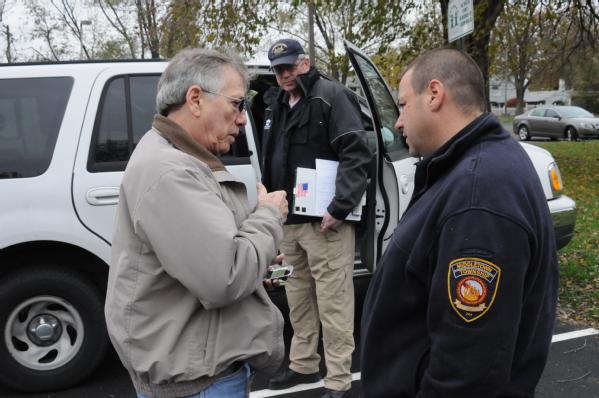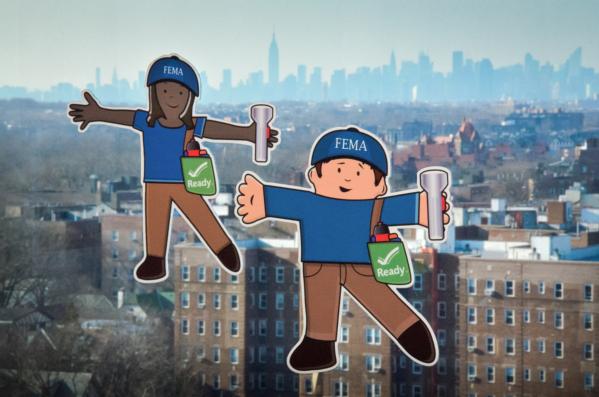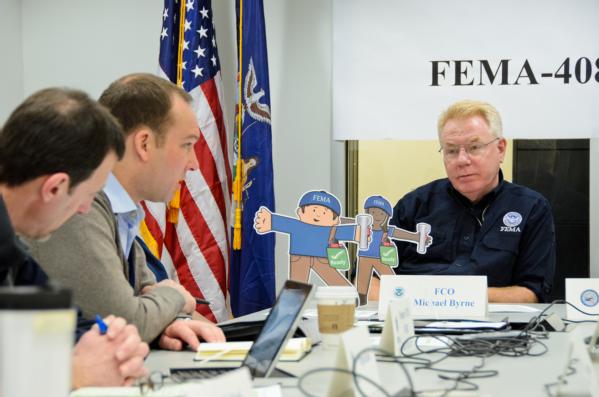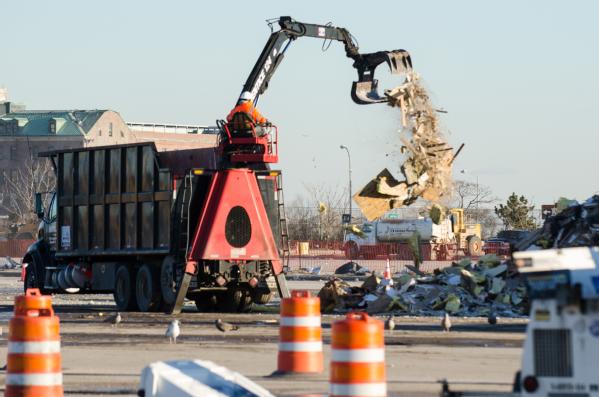Al Roker & Natalie Morales' family show preparing for disasters is easy
I recently got a chance to meet with Al Roker of the Today Show to talk about preparedness. Al reports on weather and disasters, so being prepared is something he often talks about. He was getting ready to shoot a preparedness video for Ready.gov, and in case you haven’t seen it yet, take 30 seconds to check it out:
Before Al filmed that great video, we had a chance to walk through some of the communities damaged by Hurricane Sandy and talk about why most American’s aren’t prepared for the disasters that can happen in their community, and a few simple things folks can do to be better prepared.
Natalie Morales wanted her family to be better prepared for disasters, so the FEMA team met with the Morales family in Hoboken, New Jersey as they put together their emergency supply kit and practiced their emergency plan. The TODAY Show crew followed us along, too, catching some of our conversation and Al helping the Morales family get prepared.
As you can see in this video, Al is as funny and friendly as he seems on TV! I’m also glad the video shows just how easy it is to get yourself and your family prepared for emergencies. Really, preparedness is something we all do every day. At work and at home, we plan for ourselves and our families. We make lists, we gather supplies and we talk to each other.
As we were shooting the video with the Morales family, I got the sense that they were surprised how easy (and fun!) preparing for emergencies can be. A few of the key points:
- In the video, you’ll see Natalie Morales’ family doing a quick practice drill. It took just a few minutes to teach her children how to get out of their house in case of emergency. They also practiced what to do during an earthquake, which only took a few minutes to explain and only seconds to practice.
- A kit may seem expensive, but it doesn’t have to be because most items you need for a basic emergency are already in your house – like flashlights and batteries! Natalie and Al did a scavenger hunt with the kids and what were some of the things they grabbed? Marshmallows. Their gaming system. Batteries. And a few more items. You’ll have to watch the video to see their full list and what the kids learned.
- Making a plan takes less than 5 minutes: pick a meeting spot so you and your loved ones can meet up. Find a place in your neighborhood and some place further away in case you can't get home.
- Just talking about preparedness can be a great and totally free way to start. You can discuss how you would get a hold of each other if phone lines are down. You can ask kids what they know about safety and being prepared.
I want to thank Al and Natalie for taking the time to talk about preparedness and I hope you will share Al’s video and Natalie’s video with your friends and family; but more importantly, I hope the key point gets across – preparing for emergencies can be as easy as getting started. For ideas on starting the conversation with your family, visit Ready.gov.


